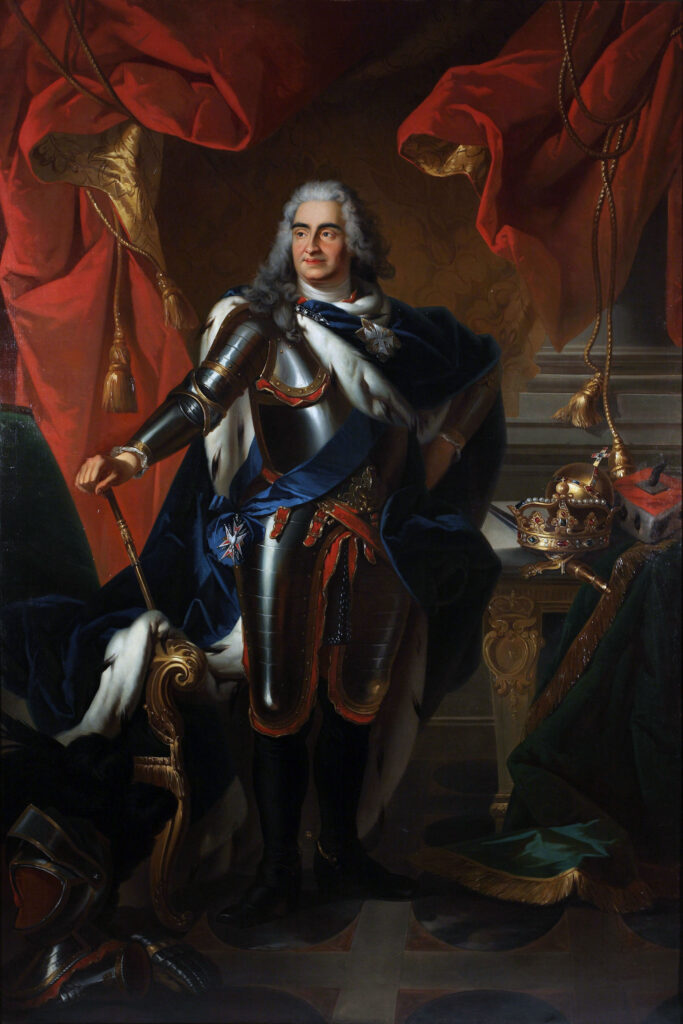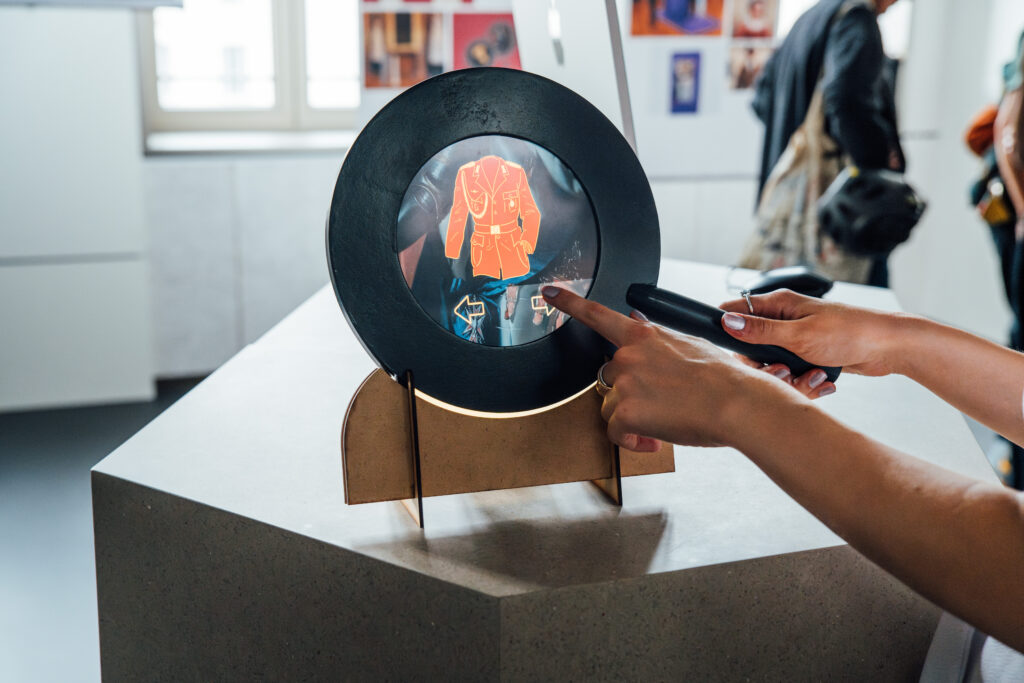The Parade Rooms at the Residential Castle in Dresden were built by August II (1670 – 1733), prince-elector of Saxony and King of Poland. The occasion of the building was the marriage of August’s son Friedrich August II with the Austrian Emperor’s daughter Maria Josepha in 1719. But a closer look into the rooms reveals that the marriage took not centre stage: August II only intended to demonstrate his power and richness.
– A collaboration with the Staatliche Kunstsammlungen Dresden –
– A work with Maria Ettelt and Anaïs Görden –
Analyzing the Problem
Many objects and pieces of furniture are made out of expensive materials, which were crafted through exploitation. However, most of them are presented in the rooms without any information about them.
The Staatliche Kunstsammlungen Dresden gave us all important information about four different objects in the room. With additional research, we wanted to construct an exhibition prototype, which informs the visitors about the (sometimes problematic) story behind each object in an interactive way. (Here you can get additional information about the project).


Research about the Monarch’s Portrait
The Monarch’s Portrait of August II was painted in 1718 by Louis de Sylvestre. It shows August II in a similar pose as Louis XIV – typical for absolutistic monarchs.
There are a few insignias of power, the meaning as well as the existence of which are not obvious at first glance:
- The Throne
- The Crown
- The Imperial Orb
- The Royal Cloak
- The Parade Armour
- The Course Sword
- The Scepter
- The Order of the Golden Fleece
- The Portrait itself
Additionaly, the meaning of the insignias are not known by everybody. So, we started a research to find out, why these insignias were so important to August II and to also put them in a contemporary context.
Brainstorming Ideas
We’ve collected information about the insignias of power and August II himself. Now, we brainstormed some ideas on how we can show the information to the visitors in a more interactive way. For that, we drew some storyboards about how the user could interact with the exhibition. We extracted these ideas for our project:
- To make it more interactive, we wanted to present the information about the portrait on a tablet.
- For a better understanding, we wanted to compare the information about the insignias with something/someone from the present.
- We wanted to force the user, that he/she has to search the insignias on his/her own.
Based on this, we combined our ideas in the next step.


Refinement of the idea
Our final idea culminated in an interactive magnifying glass: This would be built up from a wooden prototype with a tablet inside, enabling the visitor to click through different images. The procedure of the software will be as follows:
- Start screen with a short explanation about the situation and the software itself,
- image of one of the insignias of power from the portrait on a timeline,
- image of an insignia from present time with a similar meaning on another timeline.
- The user has always the ability to change the timeline by clicking on the left button and
- he/she has the ability to mute or unmute the application.
All screens will have an audio output with information about the displayed insignias.
Low-Fidelity Prototype
We’ve built our first prototype to test the interaction of the magnifying glass. For that, we used the MITAppInventor, to create a simple application for an Android tablet.
We evaluated the following aspects from the user testing:
- Many users were confused about the timelines,
- the audio, which was a computer voice, didn’t sound nice,
- the pieces of information about the insignias of power were too much to stay focused.
Those issues would later be fixed in the final prototype.


High-Fidelity Prototype
For the final prototype, we used an iPad 11 and crafted a new model for the magnifying glass. The application was written in Swift; here we changed the UX as follows:
- Start screen with a small explanation about the situation and the software itself,
- image of one of the insignias of power from the portrait,
- image of an insignia from present time with a similar meaning,
- image of another insignia from the portrait,
- image of an insignia from present time with a similar meaning,
- and so on.
At the end, the user doesn’t have to switch between different timelines which allows for a continuous flow.
We also shortened the information and the audio was spoken by myself to give it a more natural voice. The model was made out of MDF. For the insignias from present time, we drew images on our own, in order to not have a direct comparison to a political object or person.
Presentation for the Staatliche Kunstsammlungen Dresden
Our study course created 7 different prototypes at all. Those were presented to the Staatliche Kunstsammlungen Dresden (here is a list of all of them). All the projects received a great feedback and at the end, the jury chose one project which should be built and used for the next exhibition.
Our projects were also presented during the design exhibition at the Hochschule für Technik und Wirtschaft Dresden in July 2024.
Take a look further down for more impressions!
Copyrights photos Staatliche Kunstsammlungen Dresden: Crispin-Iven Mokry
Copyrights photos Hochschule für Technik und Wirtschaft Dresden: Karla Schröder











